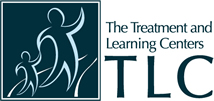Augmentative and Alternative Communication Evaluations & Therapy

At TLC, our goal is to provide all individuals with a mode of communication that allows them to express their wants and needs and to develop their social communication skills. Our therapists provide assessments to determine the best AAC solution for the individual and therapy services to develop AAC competencies so the individual can communicate more effectively.
What is AAC?
AAC means all of the ways that someone communicates besides talking. People of all ages can use AAC if they have trouble with speech or language skills. Augmentative means to add to someone’s speech. Alternative means to be used instead of speech. Some people use AAC throughout their life. Others may use AAC only for a short time, like when they have surgery and can’t talk.
There are a lot of different types of AAC. No-tech and low-tech options include things like
- gestures and facial expressions,
- writing,
- drawing,
- spelling words by pointing to letters, and
- pointing to photos, pictures, or written words.
High-tech options include things like
- using an app on an iPad or tablet to communicate and
- using a computer with a “voice,” sometimes called a speech-generating device.
A person may use different types of AAC because there are many ways that we all communicate. An AAC system means all of the tools of this type that a person uses.
(from ASHA.org)
 What happens at an AAC Evaluation?
What happens at an AAC Evaluation?
Therapists at TLC use feature matching, the process of matching an individual’s unique skills and needs to the features of AAC communication systems, tools, and strategies. Therapists obtain information about an individual’s receptive and expressive language skills, speech skills, vision, hearing, and motor skills. They then determine what communication needs exist and trial AAC systems to determine which ones can best meet those needs. AAC solutions could be low-tech or high-tech.
Why TLC AAC Therapy?
AAC therapy at TLC includes the following strategies to help an individual become a successful communicator:
- Developing AAC competencies with targeted goals
- Using core word teaching strategies
- Supporting Gestalt Language Processors who use AAC
- Integrating literacy instruction
- Supporting communication partners
- Using evidence-based practices such as modeling and least to most prompting
- Increasing engagement and motivation for communication
- Facilitating carryover of skills to all communication environments
